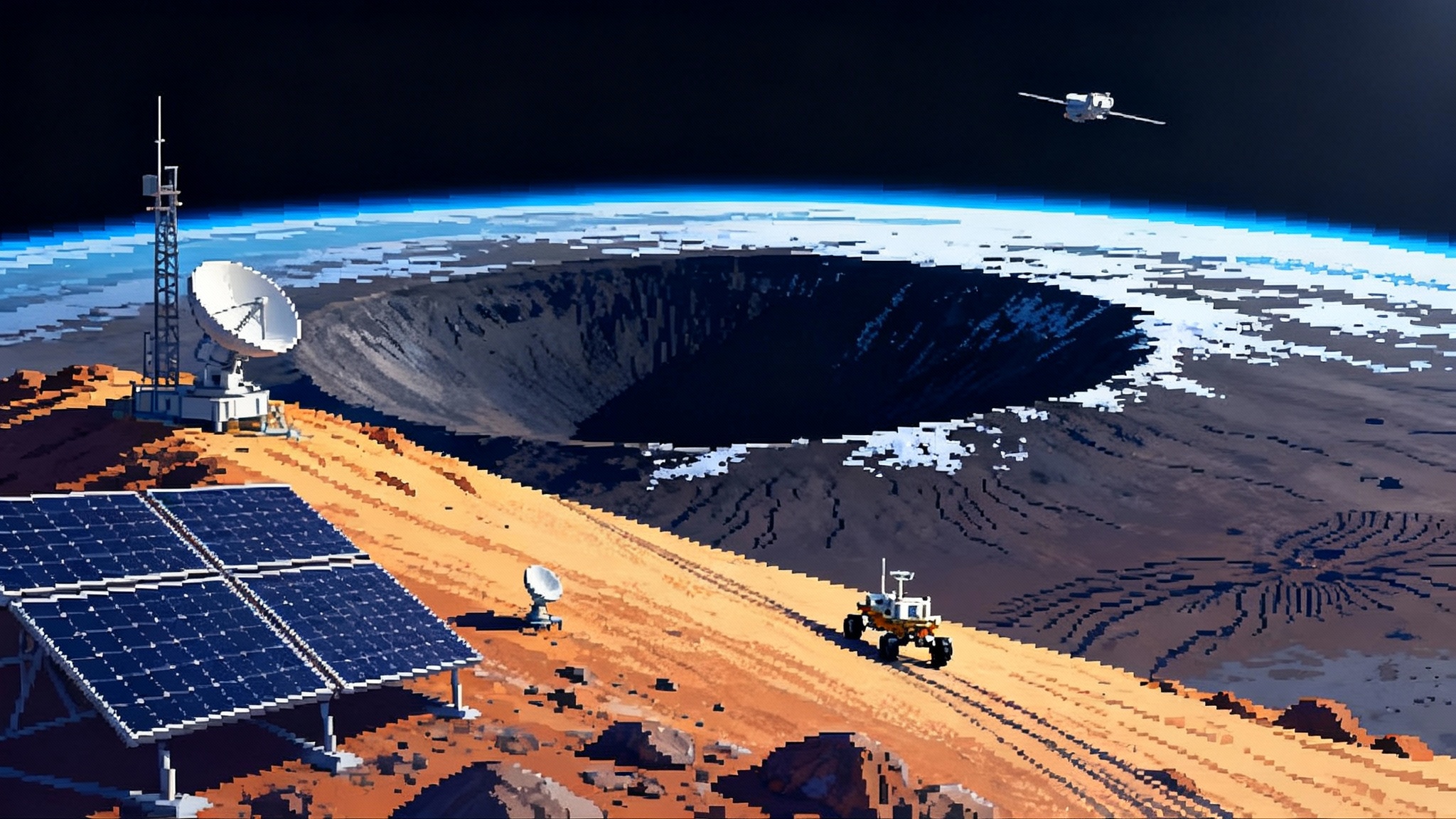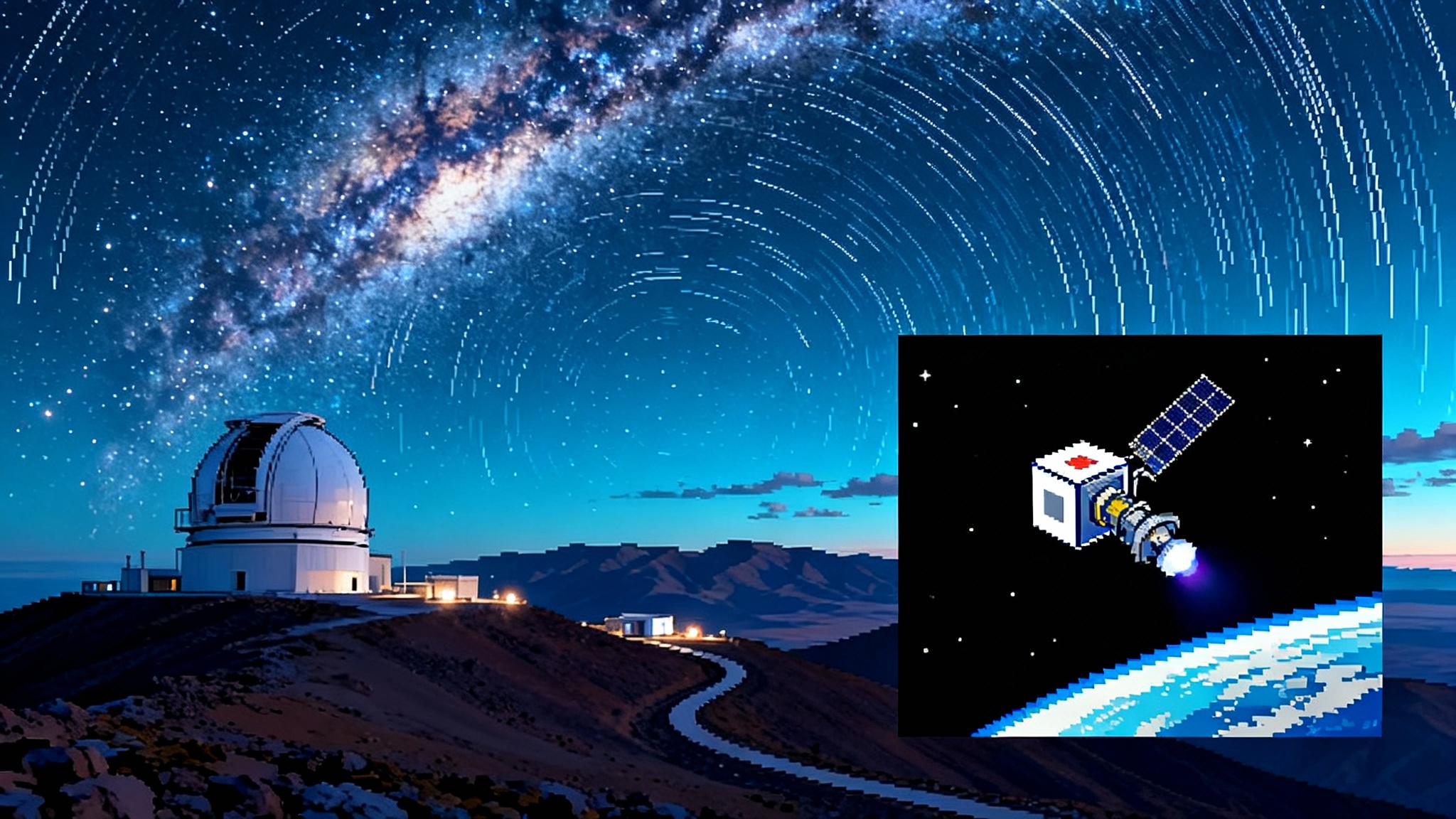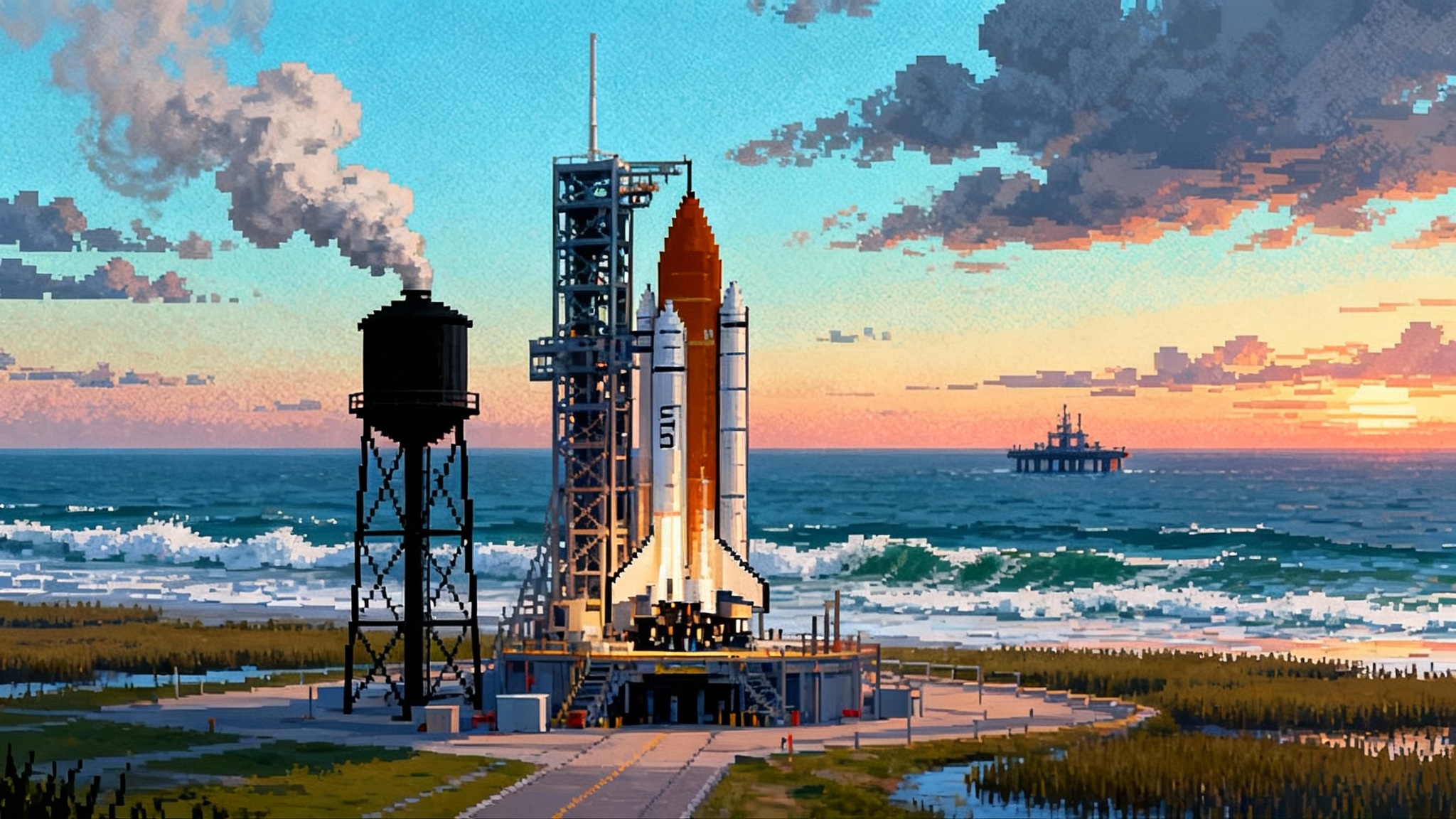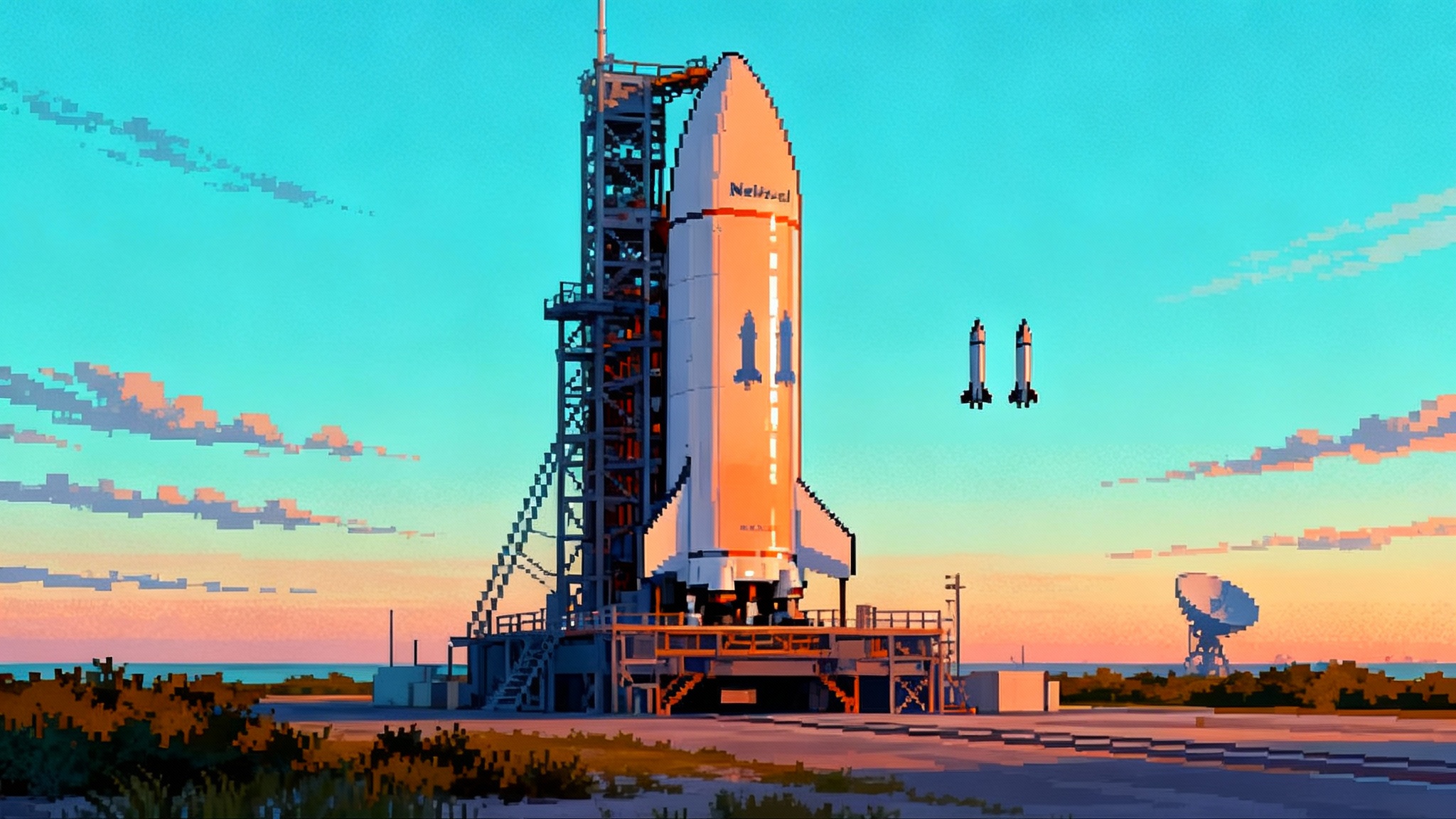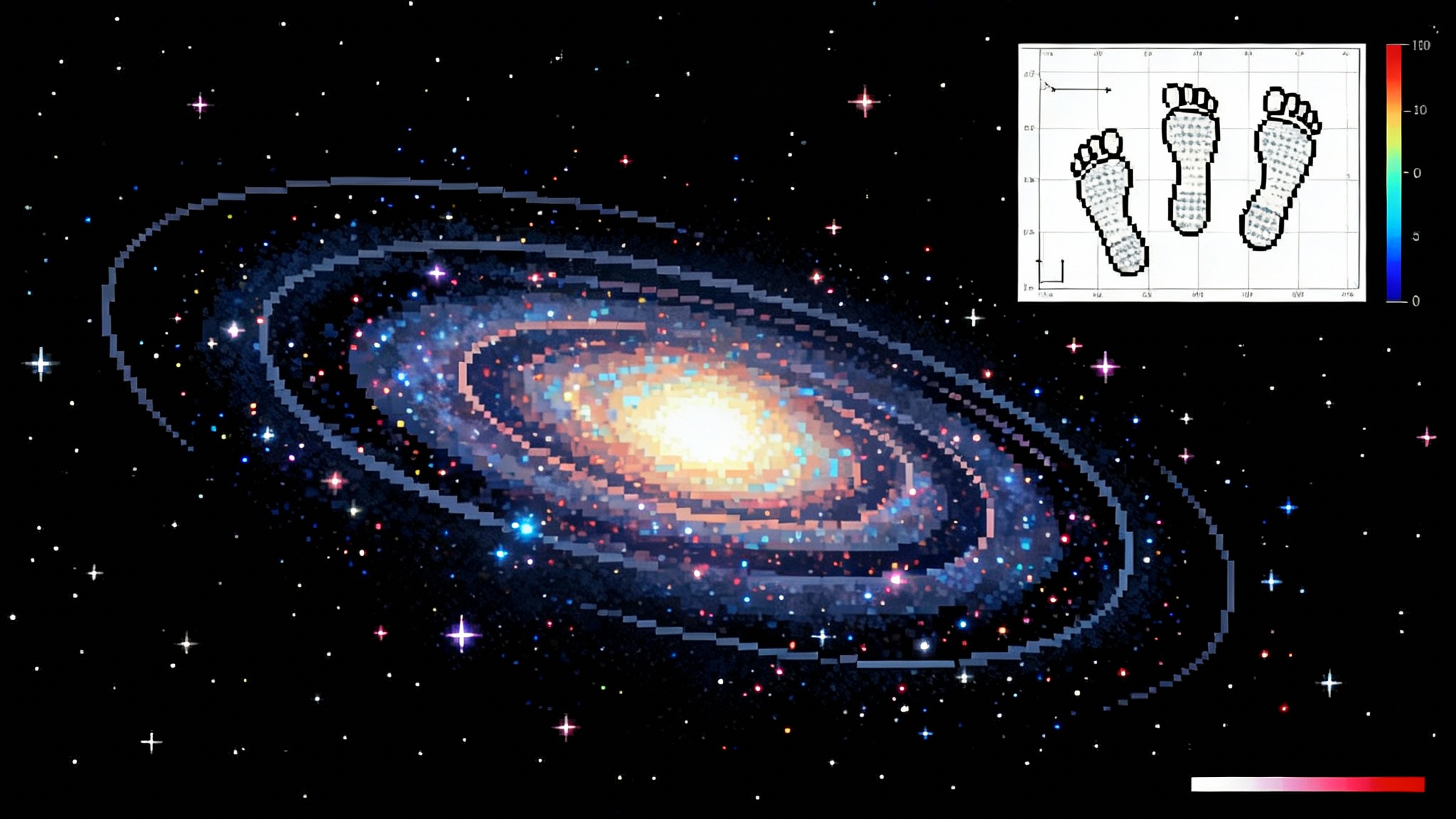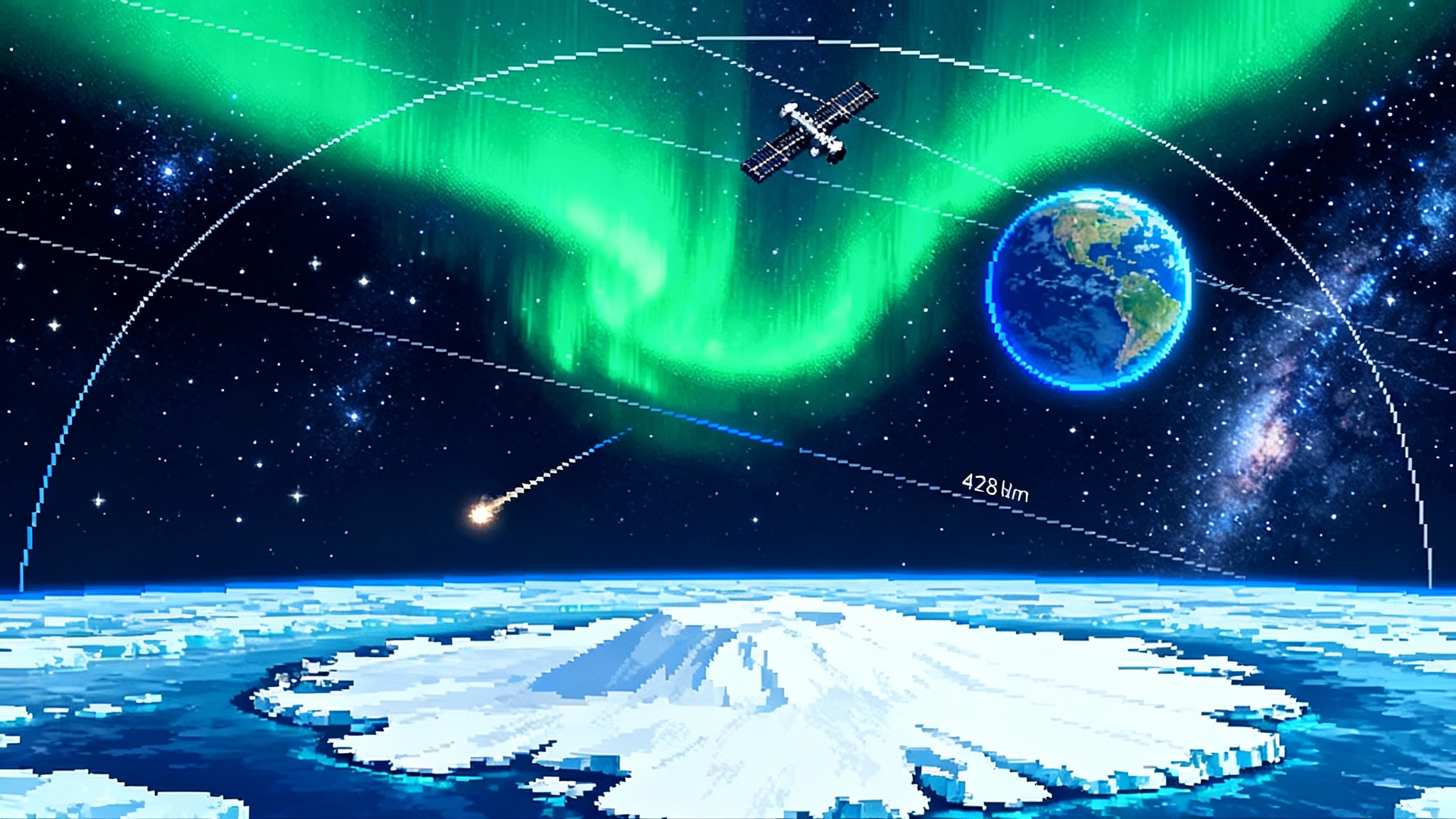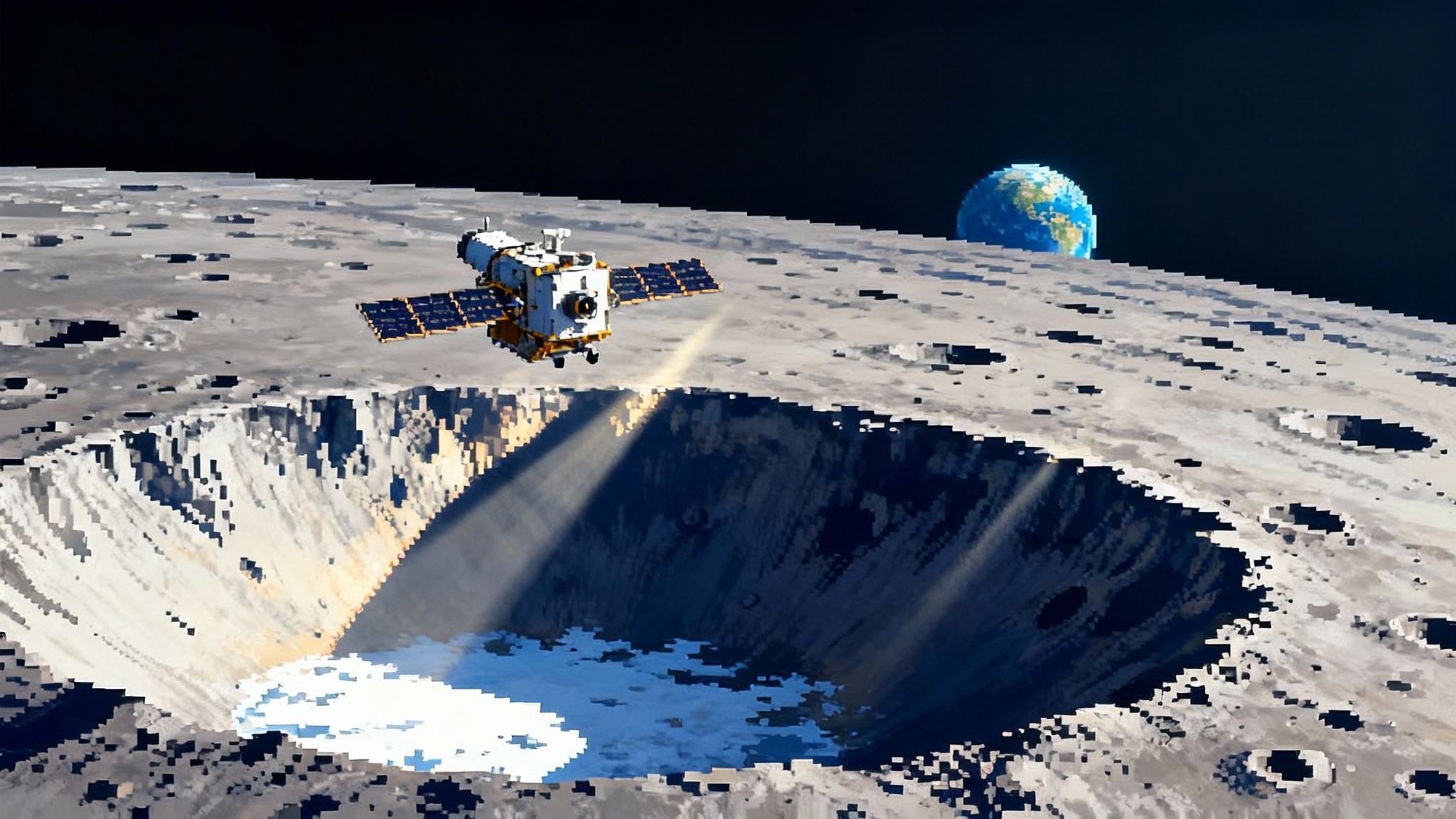Tianwen-2 hits halfway to Kamoʻoalewa, resetting the 2020s
China’s Tianwen-2 has crossed the midway point to Earth’s quasi-moon Kamoʻoalewa. The halfway image, a 2026 rendezvous plan, and a 2027 return window could reset small-body science, planetary defense, and the pace of sample missions.
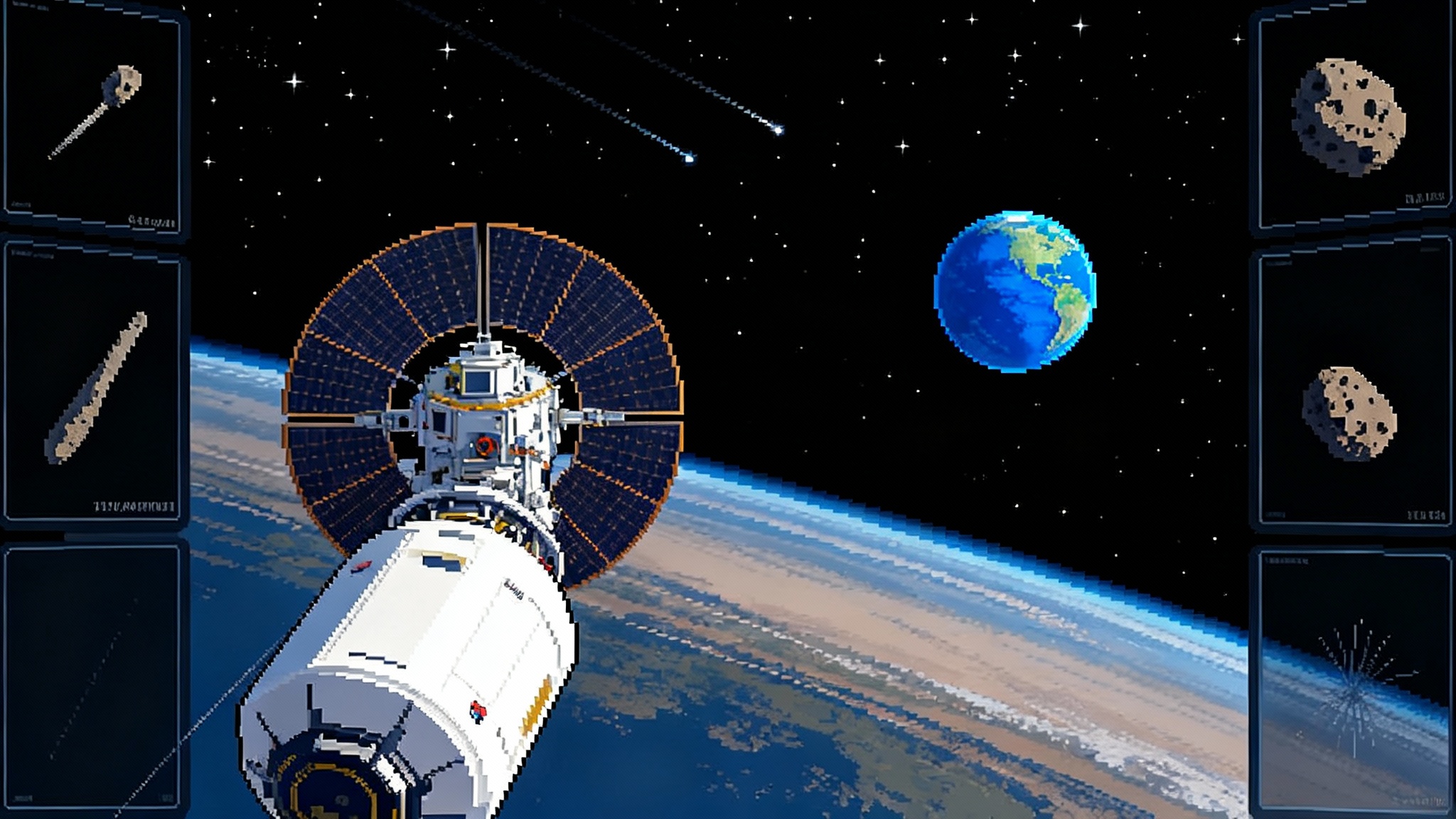
A halfway selfie that changes the pace
Some mission milestones feel routine, then you see the picture. On October 1, 2025, China released a Tianwen-2 monitor-camera image that framed the spacecraft, its white sample return capsule, and a distant blue Earth in one shot. The caption mattered as much as the selfie. Controllers reported the probe was about 43 million kilometers from Earth and roughly 45 million kilometers from its first target, the near-Earth asteroid 469219 Kamoʻoalewa. The message was simple. Halfway there, systems healthy, instruments ticking, navigation on track for a mid 2026 rendezvous. For a decade that has already delivered firsts in asteroid deflection and sample returns, this was the next gear change. See the China Daily halfway image update.
Why dwell on a midpoint photo? Because it locks the calendar. If Tianwen-2 keeps up this tempo, China could deliver fresh samples from one of Earth’s strangest companions as soon as late 2027. That single fact reshapes the competitive map for small-body exploration in the second half of the 2020s.
What a quasi-satellite really is
Kamoʻoalewa is not a moon of Earth, but it is not a typical near-Earth asteroid either. It lives in a 1 to 1 orbital resonance with our planet. Imagine running track with a friend who matches your lap time but takes a slightly different lane. From the Sun’s point of view you both circle once per year. From Earth’s point of view your friend seems to drift ahead and behind, drawing a lopsided loop in the sky. That is a quasi-satellite.
The key difference from a true moon is gravity. True satellites are locked inside a planet’s Hill sphere, the zone where the planet’s pull dominates. Quasi-satellites loop outside that zone and are bound to the Sun, not to the planet. The dance can last for thousands of years before subtle forces nudge the partner away. Kamoʻoalewa appears to be the most stable quasi-satellite companion Earth has right now, which makes it a rare laboratory. You get the long exposure of a near neighbor without the complications of a big planet’s tidal grip.
Why some scientists think it is a piece of the Moon
Spectra tell stories. In 2021, a team measured Kamoʻoalewa’s reflected light and found a match with weathered lunar materials rather than with the more common asteroid types. The asteroid’s fast spin and small size add to the oddity, and dynamical modeling suggests that lunar ejecta can settle into Earth-like orbits and become quasi-satellites. None of this proves the case, but it stacks the deck. If Tianwen-2 finds lunar-like regolith and returns it intact, it will give researchers a way to read a missing chapter of lunar history without drilling the Moon itself. Think of Kamoʻoalewa as a time capsule thrown off the Moon by a violent impact, then parked by orbital chance in a racetrack near Earth. See the original spectral argument in the 2021 spectral analysis.
That is why a few grams of powder will carry outsized weight. If the grains record different ages or mineral signatures than Apollo soils, they may point to the source crater and age of the ejection. If the grains look like inner belt asteroids instead, the lunar shard idea will be falsified. Either answer would be a breakthrough.
The sprint plan, two targets, one spacecraft
Tianwen-2’s roadmap is a study in momentum. First, a fast cruise to Kamoʻoalewa for close reconnaissance, surface operations, and sample collection in 2026 to 2027. After dropping a return capsule to Earth in late 2027, the main spacecraft keeps going. It uses the Earth swingby to bend onto a long arc toward 311P/PANSTARRS, an active main belt object with comet-like tails thought to be shedding dust under rotational stress. That second act stretches into the next decade, around the mid 2030s, and turns a sample snatch into a decade-long comparative study of two very different small bodies.
This dual design matters. Missions often specialize. Tianwen-2 pairs a near-Earth quasi-satellite that might be a lunar fragment with an active asteroid that behaves like a drying fountain. One target connects to lunar geology and local orbital mechanics. The other connects to the physics of rubble piles and the slow breakup of small bodies. Together they form a bridge between origins science and applied questions like how to nudge or harvest material from spinning, fragile objects.
How do you hold a spinning pebble in space
Collecting material from a 40 to 100 meter body is not like scooping beach sand. Small bodies act more like clouds of gravel wired together by weak gravity and surface forces. Tianwen-2 brings three ways to win, so operators can match the method to what they see on arrival.
- Touch and go. This is the proven tactic from NASA’s OSIRIS-REx and JAXA’s Hayabusa2. The spacecraft briefly kisses the surface while firing gas to stir grains into a collector head. It excels when there is loose regolith and the terrain is risky for longer contact.
- Hover and sweep. Tianwen-2 can hold position above the surface and extend a robotic arm to brush or scoop material. If the asteroid spins rapidly and the surface looks dusty but uneven, this method reduces the landing risk while still getting real sample mass.
- Anchor and attach. The most novel method aims to grab the ground with drilled feet or an anchoring device, stabilize for seconds, then scrape and drill to reach fresher material beneath the sun-baked crust. If this works, scientists get subsurface context that has been hard to capture on past missions.
Having all three in one mission is like sending a climber with crampons, rock shoes, and a set of cams. You do not know which route will be safe until you get there, and you may switch tools mid climb. The hardware list points to a conservative truth. Speed is not only about how fast you cruise. It is also about how many options you carry to avoid a no-sample day when the surface surprises you.
What a 2027 return could rewrite
- Lunar history with a new angle. If Kamoʻoalewa is lunar ejecta, the grains may point to a specific far side crater and a specific impact age. That would tie a crater we can image from orbit to material we can measure in a lab. It would also calibrate models of how much lunar debris escapes into solar orbit, which links to how planets recycle their skins after big impacts. See how new samples reframe models in Chang'e-6 far side results.
- Space weathering, measured in transit. Kamoʻoalewa has lived outside Earth’s magnetosphere for ages. A clean sample could reveal how micrometeorites and radiation alter silicates grain by grain. That matters for interpreting telescopic spectra of airless bodies and for planning how to process asteroid material for industry. Comparative data will pair with in situ solar wind context from IMAP space-weather stack at L1.
- Regolith mechanics on fast rotators. The way dust and pebbles cling or slide on a small, rapidly spinning body tells you if a kinetic nudge will eject clouds or simply crumple a surface. The answer feeds directly into models for planetary defense and for low-force excavation.
- Contamination control playbooks. If China delivers pristine grams from a tiny, fast target on a short timeline, it will pressure every sample mission team to streamline clean handling and global data releases. Science wins when more laboratories can run tests in parallel on sealed aliquots.
Planetary defense, practiced on the real thing
Planetary defense moved from theory to field test in 2022 when a guided impact changed the orbit of a small asteroid moon. That result was proof of concept. The next leap is to characterize targets before you ever push them, because a rubble pile, a monolith, and a lunar shard will react differently to the same tap.
Tianwen-2’s close mapping and mechanical sampling will help build that lookup table. If Kamoʻoalewa turns out to be dense, coherent, and dust poor, that suggests one set of deflection outcomes. If it is a fluffy aggregate with electrical cohesion on sunlit slopes, that implies another. Put the observations next to those coming later this decade from European inspectors at the DART impact site and from United States assets that will work around the 2029 Apophis flyby, and you get a tighter, shared model of how small bodies break, slide, and spray. The logic is straightforward. Better target physics, better deflection predictions, lower false confidence.
In-space resources and a quicker United States response
Quasi-moons are not mining targets in any near-term sense, but the techniques to catch, perch, and gently dig on a centimeter-per-second gravity field are exactly what resource companies need. The last two years have seen a surge of private mission plans and demonstrations aimed at small bodies. Some flights have stumbled, others have locked in funding, but the overall trend is clear. Cheaper buses, more rideshare opportunities, and smarter autonomy are pushing small-body operations from once-per-decade epics to a cadence measured in single years.
A faster, commercially infused United States response does not require copying Tianwen-2. It requires pairing national missions with private tempo. Here are three concrete moves that would matter in 2026 and 2027.
- Pre-buy deep space rides and radios. Reserve secondary slots and deep space communications time for two or three annual microscouts to near-Earth objects. Tell industry exactly what propulsion and navigation standards unlock the subsidy. This brings down the cost and de-risks the unknowns for young companies.
- Treat instruments as apps. Fund a catalog of small, modular regolith tools, from brush heads to micro corers to sticky pads, that can bolt to different commercial arms. Publish interfaces and data schemas, so any scout can carry a few and return comparable measurements.
- Close the discovery to visit loop. Support the planetary defense telescope mission already in the pipeline with an explicit budget line to hand off newly found targets to rapid scouts. The point is not to mine. The point is to practice on a spectrum of real objects while industry learns to build and fly cheap hardware that does not wait for perfect conditions. This dovetails with Rubin's survey telescope momentum.
The upside is twofold. The science community gets more shots on goal and richer statistics, and the commercial sector gets paid practice on the same skills they will need later for material handling. Everyone gets better at touching small things without breaking them.
The next 6 to 12 months, a watchlist
- Cruise checkouts go deeper. Expect more instrument activations and calibration campaigns. Look for public status notes on spectrometers, cameras, and the dust analyzer, plus health checks on the sample return capsule thermal control.
- Midcourse navigation tweaks. One or two deterministic trajectory corrections are likely, with optical navigation images of Kamoʻoalewa against star fields as the target brightens. Small shifts now save big propellant later.
- Sampling rehearsals in software and hardware. Teams will run closed loop simulations of touch and go, and dry runs of the anchor and attach sequence, including drill spin-up and load limits. Watch for ground test videos or engineering diagrams that show arm articulation ranges and brush design updates.
- Surface operations timeline lock. As Kamoʻoalewa’s shape model improves, the mission will firm up a rotation phase to approach, a latitude band to sample, and a contingency plan if the first site proves dangerous. Expect a public naming of candidate sites once the target resolves in onboard cameras.
- Public imagery cadence. After the National Day selfie, the safest bet is a slow trickle of cruise images until optical navigation truly begins. If you see a series of phase angle experiments, that is a sign the team is tuning the visual pipeline for the final approach.
The stakes if China lands the sample first
Speed never guarantees insight, but speed with options is potent. If Tianwen-2 returns clean grams in 2027, China will claim the first samples from an Earth co-orbital companion, and possibly the first verified asteroid samples that began life as lunar rock. That would give Chinese laboratories the opening word on several hard questions, from space weathering on tiny fast rotators to the mechanics of subsurface grains in milligravity. It would also set a practical benchmark for mixed sampling tactics that others will need to match or beat.
The right response is not hand wringing, it is execution. Double down on discovery to visit pathways, keep the Apophis campaign tight, and coordinate open data so that independent laboratories can compare notes across national lines. Tianwen-2’s halfway selfie is a reminder. The decade is only halfway done. The next half will belong to teams that move fast, arrive prepared, and leave the field with samples that can speak for themselves.
